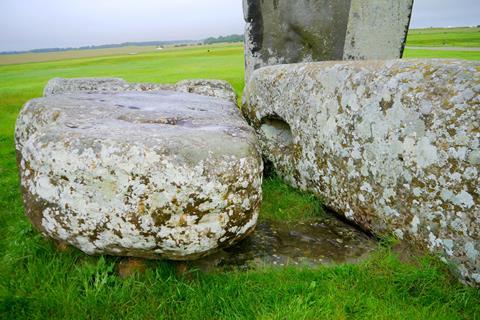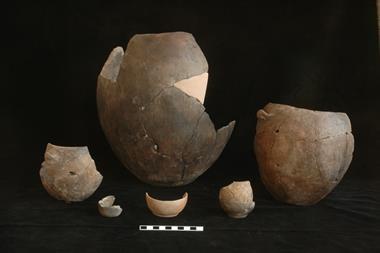
The 6-tonne altar stone at the centre of Stonehenge travelled at least 750km from northeast Scotland to its present location in southern England, according to a new analysis of its mineral content. The discovery challenges the long-held belief that the stone originated in Wales and provides evidence of the connectivity and mobility of people within Neolithic Britain.
Stonehenge is made up of large sarsen stones, sources from roughly 25km north of the monument, and smaller bluestones, that have been generally linked to the Mynydd Preseli area of Wales. The altar stone, the largest of the bluestones, sits nearly buried at the centre of the standing stone circle. Pale green in colour, the sedimentary sandstone also includes particles of other minerals produced by weathering of nearby rocks as the sandstone formed. Analysing these particles, and comparing to other samples, can reveal the rock’s origins. Previous work has associated the Altar stone with Old Red Sandstone, a group of rocks that is spread across Great Britain, Ireland, Norway, and the eastern seaboard of North America.
Working with two 30μm slices of the Altar Stone, researchers from Australia, Wales and England performed uranium–lead dating on grains of zircon, rutile and apatite found within the stone samples, as well as lutetium–hafnium dating on the zircon and rutile, and trace element analysis on the apatite.

Comparing their analytical findings to reference data from Old Red Sandstone regions across Britain, the researchers conclude that the Altar stone originated from the Orcadian basin of northeast Scotland. The over 750km transport distance of the megalith implies the existence of ancient transport and communication methods spanning the length of Great Britain, which are more complex than previously believed to exist. While not yet sure why, or how, the rock was moved such a vast distance, the team believes that it was likely transported by water to its current home.
References
A J I Clarke et al, Nature, 2024, 632, 570 (DOI: 10.1038/s41586-024-07652-1)

















No comments yet